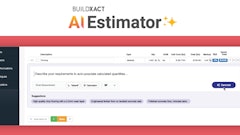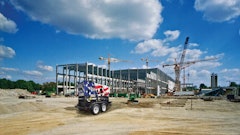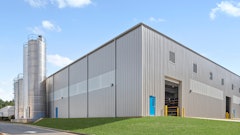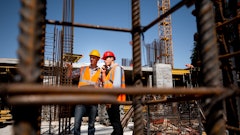
Managing costs without compromising on quality is a primary concern for contractors. Effective construction cost management involves strategic planning, accurate estimation and efficient billing processes. By implementing these practical strategies, contractors can optimize their resources, enhance project efficiency and maintain high standards of quality.
One of the most effective ways to manage construction costs is by selecting materials that balance cost and quality. This begins with thorough research and planning. Contractors should carefully assess different materials for their cost, durability and suitability for the project. Selecting high-quality materials that require less maintenance can reduce long-term costs, making them a more economical choice despite a potentially higher initial investment.
Another strategy is bulk purchasing, which can often result in significant discounts. This approach is particularly beneficial when materials can be stored safely without risk of damage, ensuring that the savings are not offset by storage costs or spoilage. Additionally, establishing strong relationships with reliable suppliers is crucial. These relationships can lead to competitive pricing and timely delivery, further optimizing the procurement process. Reliable suppliers can also provide valuable insights into new materials or alternative options that might offer better value. By combining these strategies, contractors can effectively manage their material costs without compromising on quality, ultimately leading to more successful and cost-efficient projects.
Pre-Fabrication as a Cost-Saving Measure
Pre-fabrication is an innovative approach that can significantly reduce construction costs while maintaining quality. This method involves assembling components off-site in a controlled environment and then transporting them to the construction site for final installation. Pre-fabrication offers several advantages:
- Reduced Labor Costs: By completing much of the work off-site, contractors can reduce on-site labor requirements, leading to lower labor costs.
- Minimized Waste: Pre-fabrication processes are highly controlled, resulting in less material waste compared to traditional on-site construction methods.
- Enhanced Quality Control: Components built in a factory setting benefit from consistent quality control measures, ensuring high standards are maintained throughout the production process.
- Faster Construction Times: With pre-fabrication, many components can be assembled simultaneously, reducing overall construction time and leading to earlier project completion and occupancy.
By incorporating pre-fabrication into their projects, contractors can achieve significant cost savings and maintain high-quality construction standards. This approach not only improves efficiency but also allows for more precise project planning and execution.
Improved Estimating Techniques
Accurate estimating materials for construction is crucial in how to reduce construction costs. A well-organized estimate serves as a blueprint for the entire project, guiding procurement, planning, and execution. A comprehensive estimate should include a detailed breakdown of materials, labor, and other expenses. By itemizing each aspect of the project, contractors can identify specific areas where cost savings can be achieved. For instance, they might find more cost-effective material options or more efficient labor allocation strategies. This level of detail also helps in avoiding unexpected expenses and ensures transparency in financial planning.
Utilizing digital software solutions can enhance accuracy in material estimation and streamline the construction billing process. These tools provide precise calculations, reduce human error and allow for easy adjustments. Software can also integrate various project management tasks, offering a centralized platform for tracking progress, managing resources and maintaining detailed records. This leads to more efficient workflows and better financial control.
Regularly comparing the actual costs with the estimated figures and making necessary adjustments is another essential practice. Known as value engineering, this allows for re-designing the job to meet budget constraints without sacrificing quality. By continuously monitoring and comparing costs, contractors can identify discrepancies early and make informed decisions to optimize resources. This proactive approach helps in maintaining project quality while ensuring financial efficiency.
Efficient Billing Processes
The construction billing process is another critical area where inefficiencies can lead to increased costs. Common pitfalls include inaccurate invoicing and delayed billing, which can disrupt cash flow and profitability. To avoid these issues, ensure all job site activities are documented promptly. Using digital devices like tablets or smartphones can facilitate real-time recording of work done. This practice helps capture accurate details about the work performed, materials used and any issues encountered on the spot. Immediate documentation minimizes the risk of forgetting crucial information, reduces discrepancies and supports better communication between field workers and office staff. Additionally, it streamlines the process of updating project records, making it easier to track progress and manage resources effectively.
Conduct regular audits of invoices to catch and correct errors early. This prevents costly mistakes and ensures transparency. By routinely reviewing invoices, contractors can identify discrepancies, double-billing or missing charges and address them before they impact the project’s budget. Regular audits also enhance financial accountability and accuracy, fostering trust with clients and stakeholders. Ensuring that all billing is correct and up-to-date helps maintain a clear financial picture and prevents financial surprises that can disrupt cash flow.
Using digital software to automate billing processes further reduces the likelihood of errors and ensures timely payment. Automation eliminates manual data entry, which is prone to human error, and speeds up the billing cycle. With features like automatic invoice generation, real-time updates and payment tracking, software solutions streamline the entire billing process. This efficiency allows contractors to focus on other critical aspects of the project, reduces administrative burdens and enhances overall financial management by ensuring that invoices are accurate and payments are received on time.
Maintaining Quality with Cost-Saving Measures
Implementing cost-saving measures should never come at the expense of quality. Maintaining high standards while managing costs requires a strategic approach that emphasizes accuracy, communication, and team empowerment. Proper documentation is crucial. Avoid using makeshift methods like jotting notes on cardboard with a dull pencil, which can lead to lost or illegible records. Instead, use reliable digital tools to document all project details accurately. Digital documentation ensures that all information is easily accessible, searchable and shareable, reducing the risk of errors and omissions. Accurate records are essential for tracking progress, managing resources and maintaining transparency with clients and stakeholders.
Effective communication is another key element. Ensure there is clear and consistent communication between the job site and the office. Immediate feedback and support from supervisors can prevent delays and errors. For example, if a problem arises on-site, workers should be able to quickly consult with supervisors or project managers to find solutions. This real-time communication helps keep projects on schedule and ensures that any issues are promptly addressed, minimizing disruptions and additional costs.
Training and empowerment of the team are also vital. Equip your team with the necessary skills and tools to perform their tasks efficiently. This includes providing training on the latest construction techniques, safety protocols and digital tools. Encourage team members to input their work data on-site, fostering accountability and precision. When workers are trained to use digital tools for real-time documentation and reporting, it enhances accuracy and efficiency. Empowered teams are more likely to take ownership of their work, leading to better quality control and cost management.
By focusing on proper documentation, effective communication and team empowerment, contractors can implement cost-saving measures without compromising the quality of their projects. These best practices ensure that projects are completed efficiently, on time and within budget, while maintaining the high standards that clients expect.
Effective construction cost management involves a combination of strategic material selection, accurate estimation, efficient billing and innovative practices like pre-fabrication. By prioritizing thorough research and planning, contractors can select materials that balance cost and quality, ensuring long-term savings. Accurate estimating techniques, supported by regular comparisons and adjustments, help keep projects within budget while maintaining high standards. Efficient billing processes, bolstered by immediate documentation and regular audits, prevent costly errors and improve financial transparency. Embracing these practical strategies allows contractors to optimize resources, enhance project efficiency and deliver high-quality results while managing costs effectively.



















